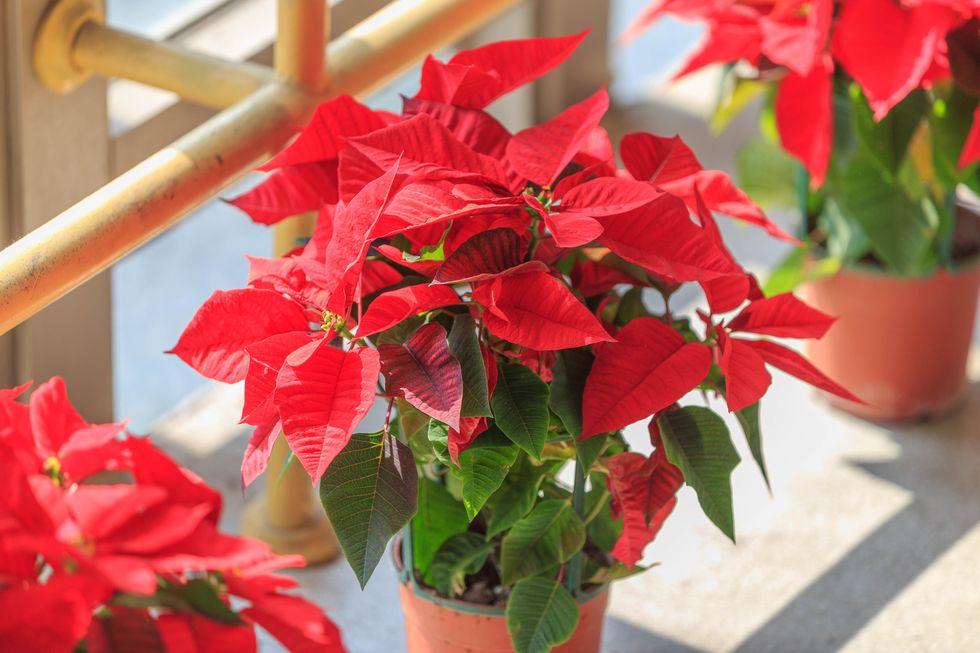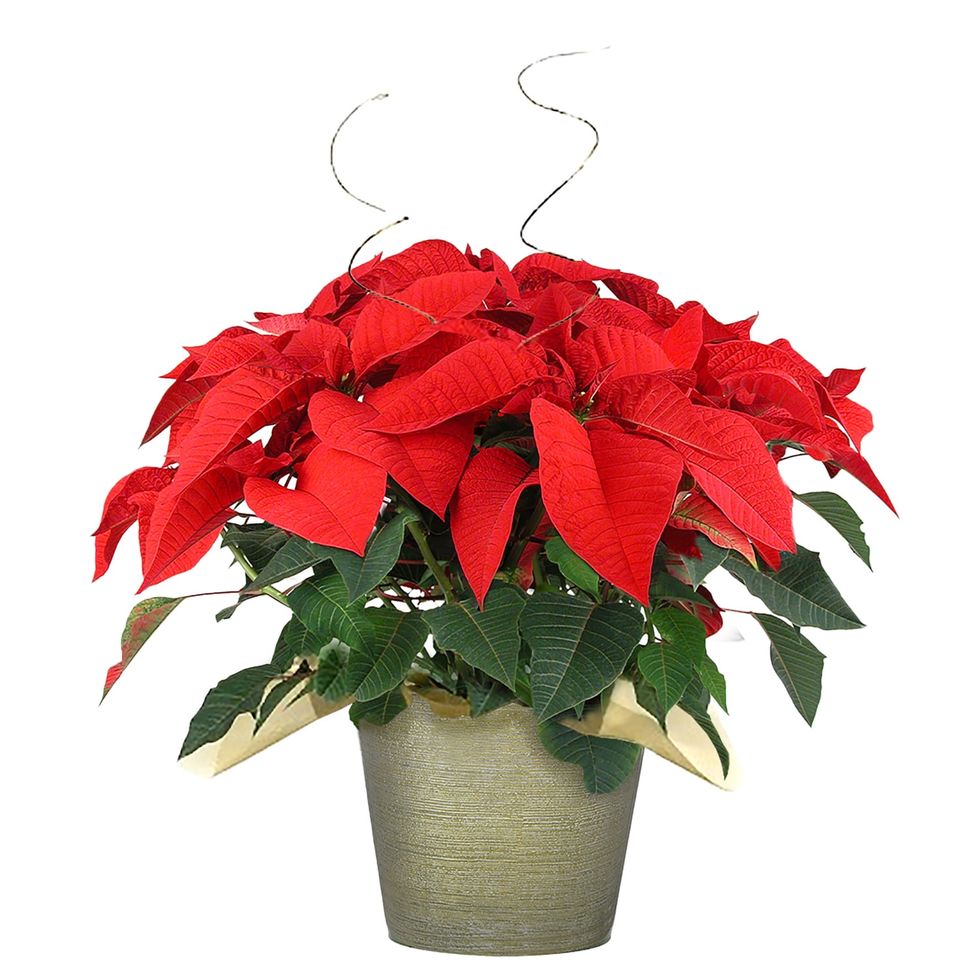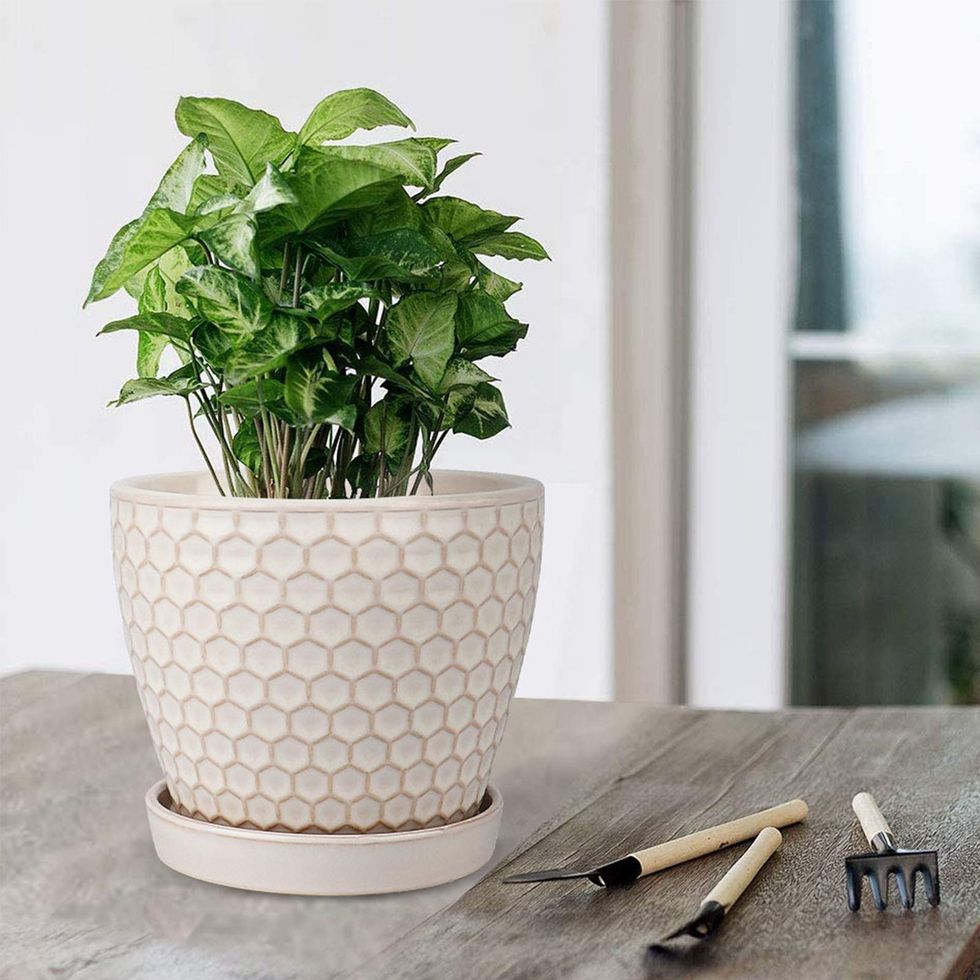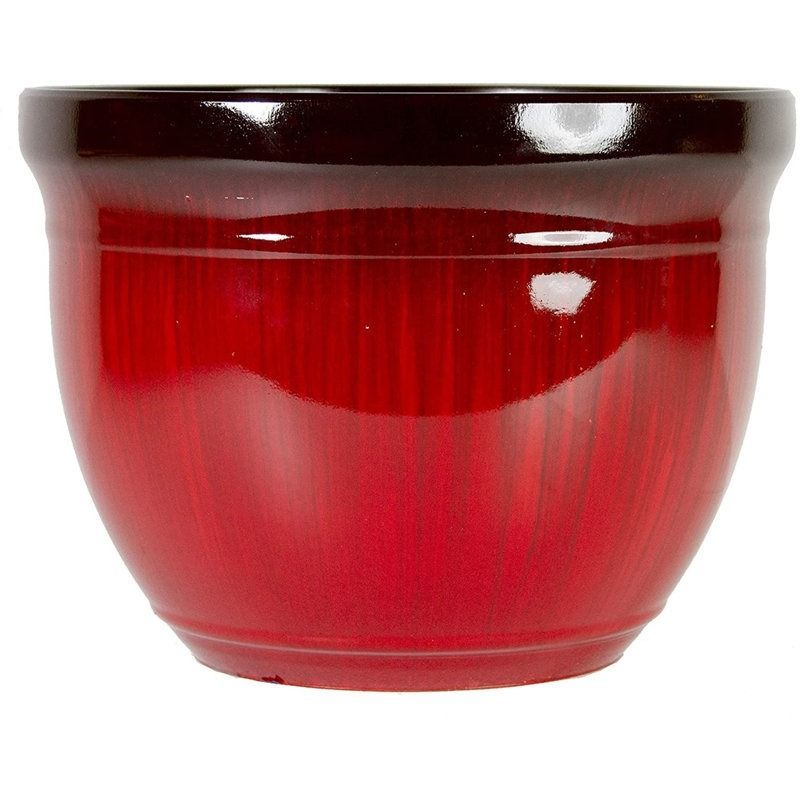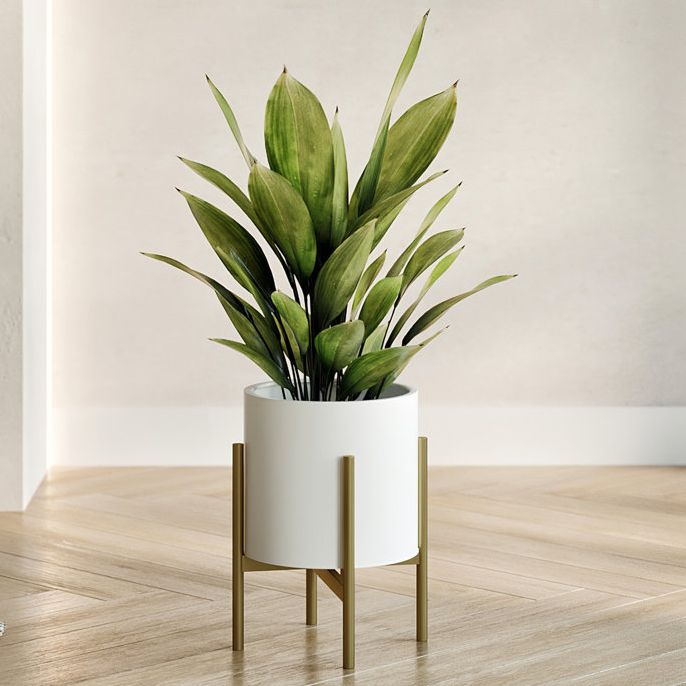Few Christmas plants embody the holiday season quite like the poinsettia, with its vibrant red hues and festive charm. And our own Ree Drummond couldn’t agree more: “I adore big pots of poinsettias, fresh evergreen boughs, sprigs of mistletoe… and the kisses they bring!” she says.
Whether gracing entryways or brightening living rooms, poinsettias have become a beloved Christmas tradition in countless homes. Native to Mexico and Latin America, the flowering shrub was introduced to the United States in the early 1800s by Joel Roberts Poinsett, the first U.S. ambassador to Mexico. Their star-shaped leaves (known as bracts) are said to symbolize the Star of Bethlehem, deepening their connection to the season. While the plant was first cultivated in Southern California, it wasn’t until the 20th century that poinsettias gained widespread popularity as a holiday must-have.
“In the 1950s, the Ecke family began modernizing breeding so poinsettias would be more suited to growing in pots,” says Rebecca Siemonsma, North American product manager for Dümmen Orange, one of the largest poinsettia breeders in the world. “In the ’60s and ’70s, they marketed them on popular TV shows so that Americans soon began associating poinsettias with Christmas.”
Nowadays, you can find poinsettias in a range of gorgeous colors from white to pink and even multicolored. Alongside Christmas trees, it’s truly not Christmas without these cheery winter flowers, no matter which shade you choose! Here’s everything you need to know to about poinsettia care so they’ll last all season long.
How do you pick a poinsettia?
First, look for poinsettias with stiff stems that support bright, buoyant leaves on top and healthy green leaves at the base. You also want to see bright yellow centers on poinsettias. The colored parts of the plant are modified leaves called bracts, and the tiny yellow flowers in the center are called cyathia. You want lots of bright yellow cyathia, but if they’re already open, it means the plant is less fresh; look for one with tight buds. Also, pull back the plastic sleeve and inspect the whole plant. Avoid those with wilted or yellow leaves, which will not grow back by the holiday.
“What you see is what you get, so choose the healthiest plant,” says Siemonsma. “If you pick one that’s in good shape, it typically will last until the middle of January.”
What temperature can poinsettias live in?
You’ll definitely want to protect your poinsettia from the cold. If it’s colder than the 50s when you buy your poinsettia, wrap it up as you transport it home, and don’t leave it in the car while you run errands. Then, it’s your best bet to keep this Christmas flower indoors.
“It’s a tropical plant, so they don’t tolerate cold at all,” says Siemonsma.
How do you care for a poinsettia?
Light
Poinsettias thrive in bright, filtered light so be sure to place yours in a spot with indirect sunlight. Avoid placing it near heaters, fireplaces, or drafty windows as extreme temperatures can stress the plant.
Soil
Poinsettias prefer moist but well-draining soil. Once you bring your plant home, remove it from its protective plastic sleeve and foil pot cover. If you keep the foil cover, poke drainage holes and place a saucer underneath to catch excess water, but don’t let the plant sit in water as it can lead to root rot.
Water
Check the soil every five to seven days. Water when the top of the soil feels dry to the touch, keeping it evenly moist but not soggy. A quick tip: lift the pot—if it feels lightweight, it’s time to water. Be cautious not to let the plant dry out to the point of wilting.
Temperature
Poinsettias thrive in consistent indoor temperatures between 65°F and 75°F. Keep them away from sudden temperature changes, such as drafts or heat sources, to prevent stress.
How to Prune Poinsettias
If you’re displaying your poinsettia as a seasonal decoration, there’s no need to worry about fertilizing or maintaining precise light levels—just enjoy its festive beauty! But if you’re hoping to keep it thriving and encourage it to rebloom next year, pruning will be an essential step. Start in early spring, once the colorful bracts fade and the plant looks tired. Cut the stems back to about 4 to 6 inches above the soil, leaving a few leaves on each stem to promote healthy growth. Don’t worry if it looks sparse—this process encourages the plant to focus its energy on producing fresh, bushy growth. Make sure to repot it in fresh soil if it’s been in the same pot for a while, as this can help refresh its nutrients.
Throughout the summer, you can continue to pinch back new growth to maintain a compact, full shape. By late August, stop pruning and let the stems grow so that the plant has time to develop buds for the holiday season. Keep your poinsettia in bright, indirect light and fertilize every few weeks during its active growing period to keep it healthy and vigorous. With consistent care, you’ll be rewarded with vibrant bracts just in time for Christmas!
Are poinsettias poisonous?
Poinsettias are not poisonous, though the sticky sap can be irritating to people if you have a latex allergy, says Siemonsma. And though they’re not seriously toxic for pets, according to the ASPCA, anything your pet ingests to excess can cause GI upset and vomiting—so keep this plant out of your furry friend’s reach.
How do you get a poinsettia to rebloom?
If you’re up for a challenge, you can try to get a poinsettia to bloom again.
“Poinsettias are photoperiodic, which means they need long nights and short days to initiate flowers,” says Siemonsma. If you’re willing to give it a shot, let it dry out a little after the holidays. The plant will drop leaves and go into a resting period. In March or April, plant it in a pot one size up; that is, if it’s in a 6-inch container, transfer to an 8-inch one. Make sure the pot has drainage holes. Use regular or succulent potting soil, cut the poinsettia back by 2/3 of its size, and place in a south or east-facing window. After the danger of frost has passed, put it outdoors.
During the summer, feed it every other week with any houseplant fertilizer. Bring it indoors before nighttime temperatures drop below 60 degrees. By the end of September, start mimicking the daylight cycle by keeping it in bright window during the day with zero nighttime light, even from streetlights or computer screens. Or put it in a closet, then pull it out again in the morning. Your plant should start blooming in eight weeks or so, though it will never look the same way it did when you first got it because of changes that occur as the plant matures.
“But consider it a ‘win’ if you get it to flower at all,” says Siemonsma. If this seems like too much effort, treat yourself to a new poinsettia next holiday season!
Arricca Elin SanSone is a writer, editor, and content creator who specializes in lifestyle and gardening. With a background in health reporting, she applies these same research skills when writing about the science of growing things. She trials new plants in her expansive garden, and her houseplant collection consists of 60+ varieties. Arricca has written thousands of articles for publications such as Country Living, House Beautiful, Good Housekeeping, Prevention, VERANDA, Southern Living, and more. She’s happiest when digging in the dirt, baking, or spending time with the people and dogs she loves.


